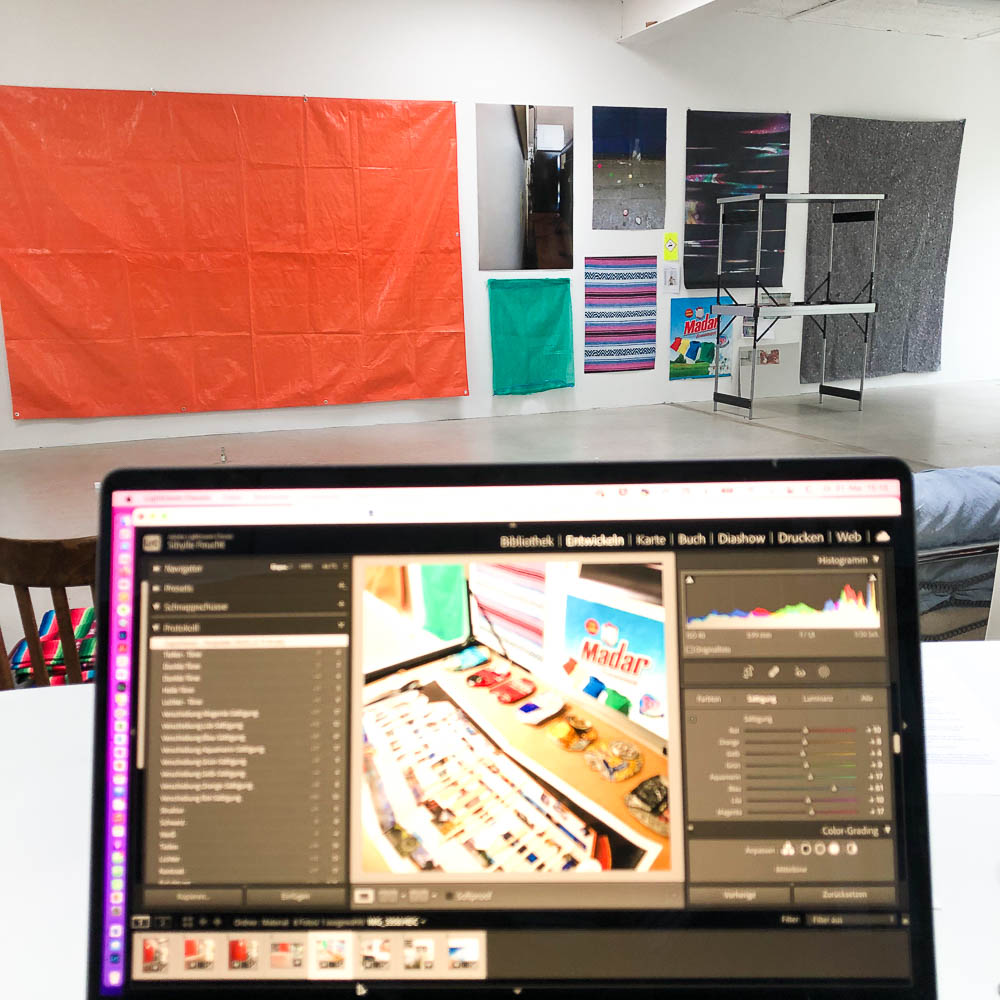In everyday life, only a few people have the pleasure of actively experiencing art at their workplace. In non-art-related professions, it is not uncommon to have art on the walls, on workspaces, or even in hallways and common areas, to create a nicer atmosphere in which employees can feel comfortable and to stimulate their creativity and productivity . But isn’t it boring to stare at the same wall with the same artwork every day? The artwork could eventually be perceived as a part of the wall and could merge with it. It’s becoming normal and habitual, and the excitement and positive effect on work might trend downward again after the initial increase in productivity, creativity and well-being.
While working at DAS ESSZIMMER I had a different experience. During the exhibition All in One by Stephan Wittmer, the back room with the exhibition was also our workplace. The Große Wand (Version Bonn)(engl: big wall) was my daily view from the laptop. The studio-inspired atmosphere with a large orange tarpaulin, a painter’s fleece, green nets resembling those on a construction site, collected pieces and photographs that looked like they were just thrown together made a somewhat strange impression on me on the first sight. It took time to deal with it and to let the art behind it work on me. Having engaged intensively, even though indirectly, the wall, the art, had become a familiar place and the digression of the gaze from the digital image on the screen to the real image of the room became a brief break for the eyes and the mind. Every time I looked at it, I noticed that the colors were even more magnificent and the construction even more coherent. The wall, that initially appeared incoherent, suddenly appeared as if it were a beautiful picture, with all its components put together like a puzzle pieces to form a larger whole and the composition only seemed to be complete when they were all included.
Now, not everyone sits in front of a wall of art eight hours a day, five days a week and engages with it as consciously and subconsciously as i did at. Working in an art-relatetd work is a privilege. Besides the art content, weg et to know the artists, their working methods, and their techniques at vernissages and finissages. By doing this, you become much more engaged with the art than just seeing it and interpreting it personally. The wall that people unconsciously stare at eight hours a day is suddenly much more than just the art on the wall.
Now, not everyone sits in front of a wall of the same art eight hours a day, five days a week and engages with it as consciously and subconsciously as I did. We take a different perspective through rational work with art as an object, what is used as content in social networks or the formal description of art and the most neutral possible representation and documentation. We try to see the art that is already so familiar to us in a neutral way. We think back to our first encounter with the artwork to empathize with viewers who have never seen the work. Which impressions are perceived in the short time of experiencing art and which impressions could the viewer only perceive at second or third glance? What should the focus be on when we document art photographically? Through our intensive confrontation, we give one or the other food for thought without anticipating too much.
After the finissage, the wall was suddenly empty and it made me a little sad. I knew I would miss that wall as a background, as a space, as a splash of color in the corner of my eye at work. The seemingly sterile white wall now once again offers space for something new. Space for a new exhibition! This continuous change keeps the view of the wall interesting and creates a certain dynamic in the working atmosphere. There is enough time to fully engage with the art but not so much that it becomes monotonous. Working in and with art enables continuous curiosity and constant confrontation with new, exciting unknowns.
